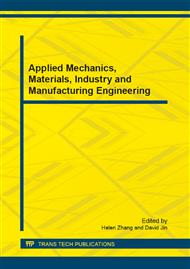p.446
p.451
p.456
p.460
p.467
p.473
p.478
p.482
p.487
Dynamic Modeling for a Non-Linear System Based on the MOESP Algorithm
Abstract:
In order to measure accurately air fuel ratio in the engine exhaust gas, the Hammerstein model of the exhaust gas oxygen (EGO) sensor was identified using the multivariable output error state space (MOESP) algorithm. Firstly, a static model of the EGO sensor was identified based on engine experiment data as a static nonlinear part of the Hammerstein model. Then, the MOESP algorithm was used to build a state space model (SSM) of dynamic linear part of the Hammerstein model. To estimate model order, the Akaike Information Criterion (AIC) and the Minimum Description Length (MDL) criterion were computed, and validity of structure identification was verified by residual analysis. Then, the auto-regressive model with exogenous input (ARX) was compared with a subspace model. The result shows that a two-order SSM using MOESP algorithm is suitable to dynamic part of the Hammerstein model for EGO sensors.
Info:
Periodical:
Pages:
467-472
Citation:
Online since:
April 2012
Authors:
Price:
Сopyright:
© 2012 Trans Tech Publications Ltd. All Rights Reserved
Share:
Citation:


